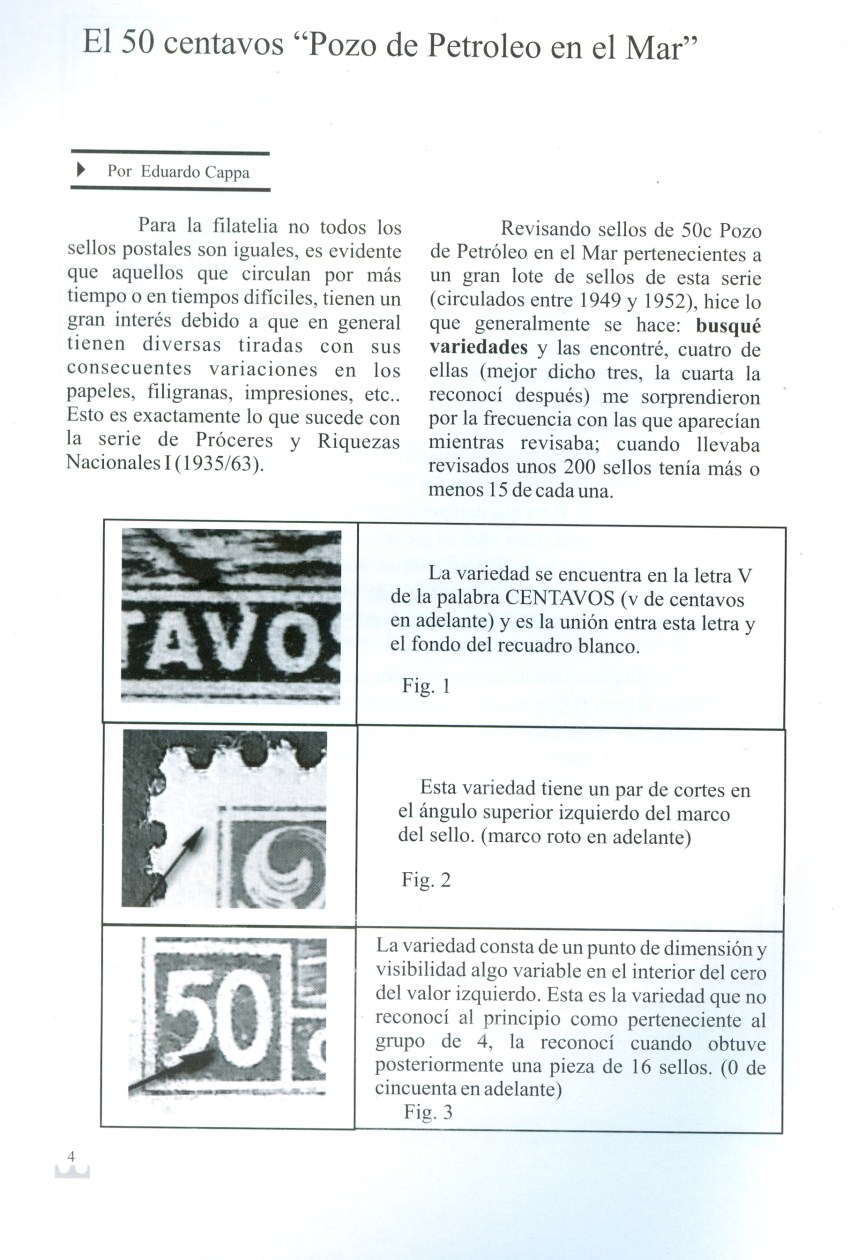Depending on the kind of printing the reproduction process from
one stamp design to a full printing sheet may vary.
All printing methods involved in the 1935-1959 period rely heavily
on the photographical reproduction techniques. We can expect that all
stamps of a printing sheet have the same design basically - the design
of the original project. In the offset-litho method we have
established that coming from one single stamp design to a root block
of 5x2 or 5x5 is the way the Casa de Moneda used to follow. The root
block got reproduced several times in order to get a pane of 10x10 or
20x10 and several panes got reproduced into a complete printing sheet.
During a long career of a particular definitive stamp the design
may get modified somewhat. We speak of different "types" if we can
actually point out to the changes made and the various "types"
normally are each others successors. Not always!
When dealing with the above step by step reproduction the
particular type will be present all over the printing sheet.
During the first step on the way to the root block several minute
characteristics may have crept in - not on purpose - but still! Each
stamp of a root block may have one or more characteristics that will
be found on quite a lot of positions in the printing sheet. A printing
sheet of 400 may have 40 of the same [5x2 root block] or 16 [5x5 root
block].
We can not call them "plate flaws"! Plate flaws can only occur on
ONE particular position of the printing sheet, never on more!The
characteristics of the root block are call "systematical flaws".
Systematical flaws will occur both in the stamps made by
offset-litho and in those in typography. But in typography there was a
short period when use was made of loose stereotypes [several single
"stamps" bound together in a pane of 10x10 or 20x10] and these
stereotypes got changed regularly or reproduced themselves and during
the reproduction / copying a minute characteristic could have crept
in! We only find this for the 5c Moreno and the 10c Rivadavia; we
rather call them different "types" as well as they can be spread all
over the printing sheet in an irregular way and not all the time in
the same manner...
I will deal with these types later on - the 5c Moreno having type
II and III irregularly mixed up in ONE printing sheet and the 10c
Rivadavia type II and III just the same!
